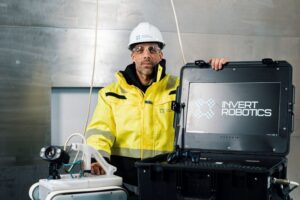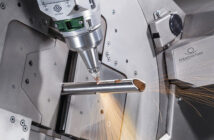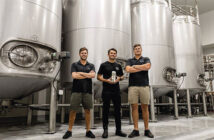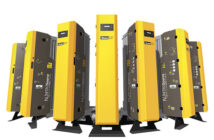
In 2007, researchers at the University of Canterbury developed a world first crawler capable of climbing non-magnetic materials.
In collaboration with the Department of Mechanical Engineering, UC Research and Innovation and local technology incubator Powerhouse Ventures, UC engineering student James Robertson identified a market for the technology and Invert Robotics was borne in 2012.
The global dairy industry, including Fonterra, Westland and Synlait, are dependent on equipment made from non-magnetic stainless steel, namely large tanks, and powder spray dryers. This equipment can crack over time and left unchecked; these defects present a risk to product quality.
The Invert Robotics inspection service is based around this unique crawler technology. Clients of the service eliminate the confined space entry and working at height hazards associated with the traditional inspection technique – hanging people on ropes inside the tank with a torch.
Invert Robotics has successfully raised more than $15M in growth capital through NZVIF, investment funds and private investors since inception and continues to experience strong growth. In addition to servicing forty countries from six global offices, expansion opportunities in the chemical and aerospace markets loom and the growth trend continues.
James Robertson, now head of product development for the New Zealand branch, says the company began in a somewhat unconventional way.
“I wasn’t involved for the original research, but I had a bit of a parallel research path at the university,” he says.
“I had experience building climbing crawlers and the university had an interesting suction cup technology that was useful for building crawlers, so we got lumped together and here we are 10 years later.”
His first exposure to crawlers was during an external honours project at the university.
“All the undergraduates in their final year do an external project for a company that has an interesting problem or a research group at the university that needs something tackled. My exposure to crawlers came from a company called Taylors Engineering in Blenheim who had sponsored a project at the university to automate some welding that was being done on stainless steel tanks. These tanks were being used in the wine industry and they wanted to increase the efficiency of their manufacturing process, so I spent a year working on that project.
“The university had a suction cup they had developed which really opened up a range of opportunities for suction crawlers that was much broader than what we were looking at. This technology was developed at the same time as I was developing the crawlers, so it was very serendipitous.”
The university had been trying to commercialise this suction cup technology for a while before Robertson became involved and because of his background working on crawlers for the wine industry he and his research group were able search out companies within the food and beverage industry.
Although the company has broadened its horizons a little now, this industry still makes up a core part of its business.
As with most technology, there is constant adaptation, and the Invert Robotics team are now looking to move into inspections for anything that isn’t steel.
“What we’ve got is the ability to climb on non-magnetic materials, and that’s unique world-wide with a crawler. That’s why we’ve branched into the specialty chemicals industry where they use a lot of stainless steel for those highly corrosive situations. They use stainless steel, they use glass, special nickel alloys. These require niche tank inspections that no one else can do remotely.
“Really the whole mission of the company is to eliminate the hazards that come with working at heights and confined space entry.”




























































































